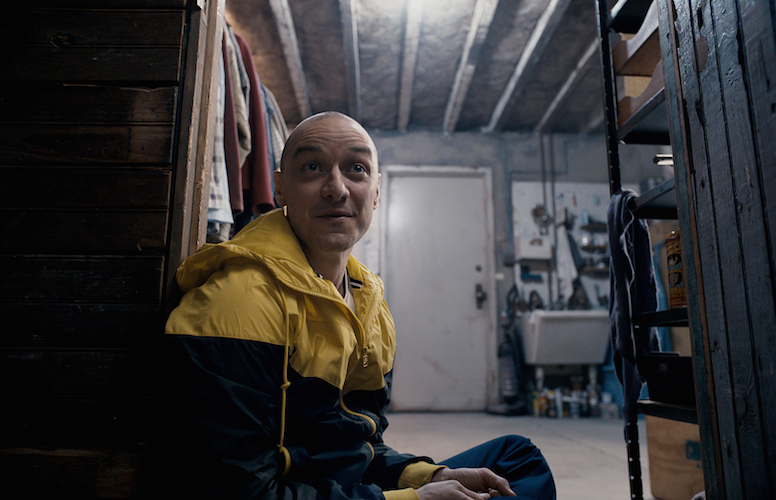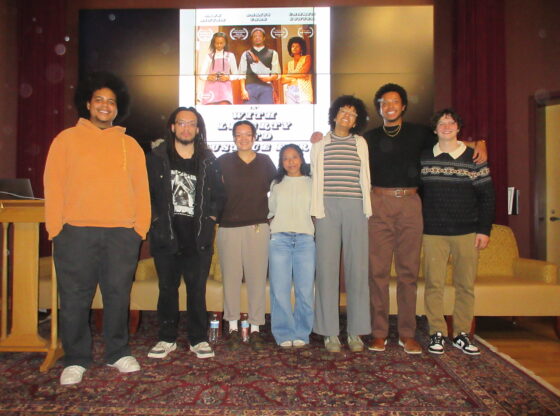Once a Hollywood poster boy, M. Night Shyamalan (“The Sixth Sense”) became nothing short of a laughing stock in the years after he turned genre conventions on their heads with films like “The Sixth Sense,” “Unbreakable” and “Signs.” Shyamalan fell into an unfortunate pattern of becoming a parody of himself: populating every film he made with hammy twists and ridiculous premises. The shtick got old fast and many wondered if the writer-director would ever again capture the greatness of his early work. After last year’s “The Visit” gave audiences a glimpse of a potential comeback for the master of horror, Shyamalan’s newest film “Split” has arrived to boldly prove his worth again.
“Split” tells the tale of Kevin Wendell Crumb (James McAvoy, “Atonement”), an individual who has 23 individual identities living inside of him. Preparing for the arrival of a prophetic and dangerous 24th personality called “The Beast,” three of Kevin’s personas hijack his mind and kidnap teenage girls Casey (Anya Taylor-Joy, “The Witch”), Claire (Haley Lu Richardson, “The Edge of Seventeen”) and Marcia (Jessica Sula, “Skins”) to serve as sacrifices. Desperate, the trio must try and manipulate Kevin’s fluctuating personalities in order to survive.
The show really belongs to McAvoy, who gives it his all to create the unique personas that make up Kevin. The four primary identities seen throughout the film (neat sociopath Dennis, mommy dearest Patricia, rambunctious child Hedwig and laidback Barry) feel like well-defined, organic characters. The result is nothing short of an acting miracle, as McAvoy turns what could easily be a disastrous role into a committed and disturbing performance. He completely sells the wildly conceived version of multiple personality disorder and in turn makes the film a hell of a lot of a fun.
Taylor-Joy is similarly brilliant, further cementing herself as the horror actress to watch after this and her fascinating role in last year’s “The Witch.” She embodies the perhaps “split” personas of her character as well, moving effortlessly between her character’s determined grit and tortured soul. Ultimately, she grounds the plot and aids in making “Split” emotionally believable—a tall order for a film with a story as bonkers as this.
For all its camp, Shyamalan’s script is endlessly entertaining and sharp-witted. The film never offers a dull moment, playing games with the audience’s mind at a nonstop pace, while backing it all up with a mixture of brilliantly weird humor and disturbing thrills. It certainly doesn’t hurt that it’s also shot with the visual finesse expected out of a Shyamalan film, composed with a dreamlike mixture of uncomfortable close-ups, disorienting points-of-view and dreary lighting motifs. All of the parts work together to turn a seemingly trashy tale into a meticulously plotted journey into darkness.
“Split” is ultimately a forsaken artist’s reclamation of confidence. Shyamalan rejects both what made him popular and what made him hated to create what appears to be a deeply personal exercise in filmmaking. He can’t help escaping some of his old ways, throwing in a trademark twist (one that, however, does little to affect the plot of the film, but just gives it a new context for fans of his earlier work), barrels of exposition and, of course, a cameo, but in the end, “Split” feels like Shyamalan’s most fully realized work since the films that made him a household name.
In a cinematic era where pure enjoyment is often difficult to find at the movies, it’s wonderful to welcome an old master back to the table.











